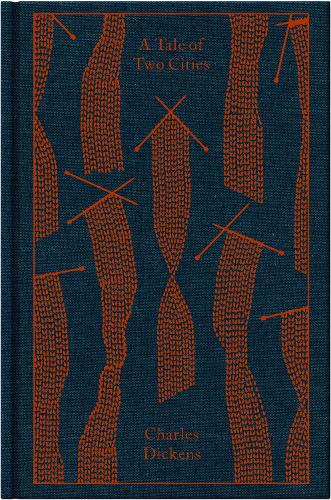
A Tale of Two Cities
(Hardback)
Available Formats
Hardback, New edition
Published: 20th November 2008
Paperback
Published: 10th June 2025
Paperback
Published: 7th December 2010
Hardback
Published: 28th May 1993
Paperback
Published: 11th May 2012
Paperback
Published: 1st November 2011
Hardback
Published: 5th January 2022
Hardback
Published: 13th September 2016
Paperback
Published: 24th September 1990
Paperback
Published: 1st November 2017
Hardback
Published: 12th November 2019
Hardback, New edition
Published: 13th September 2019
Hardback
Published: 7th April 2011
Paperback
Published: 4th May 2009
Hardback
Published: 1st March 2025
Paperback
Published: 5th May 1993
Paperback
Published: 3rd November 2008
Paperback
Published: 17th April 2024
Paperback
Published: 1st December 2003
Publishing Details
A Tale of Two Cities
By (Author) Charles Dickens
Introduction by Richard Maxwell
Penguin Books Ltd
Penguin Classics
7th April 2011
2nd June 2011
United Kingdom
Classifications
General
Fiction
823.8
Physical Properties
Hardback
544
Width 136mm, Height 200mm, Spine 44mm
660g
Description
After eighteen years as a political prisoner in the Bastille the aging Dr Manette is finally released and reunited with his daughter in England. Part of Penguin's beautiful hardback Clothbound Classics series, designed by the award-winning Coralie Bickford-Smith, these delectable and collectible editions are bound in high-quality colourful, tactile cloth with foil stamped into the design. After eighteen years as a political prisoner in the Bastille the aging Dr Manette is finally released and reunited with his daughter in England. There two very different men, Charles Darnay, an exiled French aristocrat, and Sydney Carton, a disreputable but brilliant English lawyer, become enmeshed through their love for Lucie Manette. From the tranquil lanes of London, they are all drawn against their will to the vengeful, bloodstained streets of Paris at the height of the Reign of Terror and soon fall under the lethal shadow of La Guillotine.
Reviews
[A Tale of Two Cities] has the best of Dickens and the worst of Dickens: a dark, driven opening, and a celestial but melodramatic ending; a terrifyingly demonic villainess and (even by Dickens standards) an impossibly angelic heroine. Though its version of the French Revolution is brutally simplified, its engagement with the immense moral themes of rebirth and terror, justice, and sacrifice gets right to the heart of the matter . . . For every reader in the past hundred and forty years and for hundreds to come, it is an unforgettable ride.from the Introduction by Simon Schama
Author Bio
Charles Dickens (1812-70) was a political reporter and journalist whose popularity was established by the phenomenally successful Pickwick Papers (1836-7). His novels captured and held the public imagination over a period of more than thirty years. Richard Maxwell teaches in the Comparative Literature & English departments at Yale.
